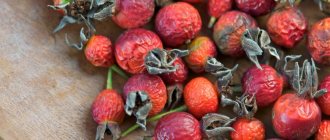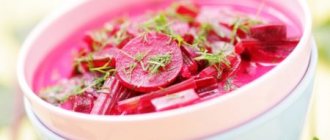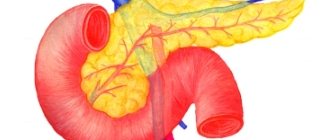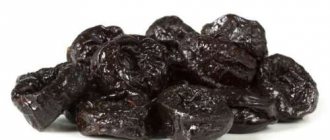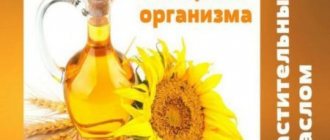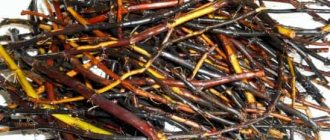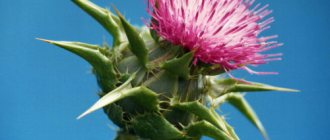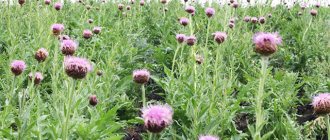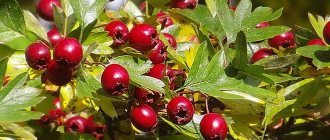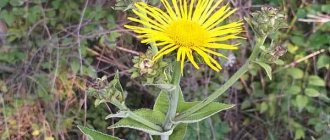Pancreatitis is an acute and chronic inflammation of the pancreas. The danger of the disease lies in the high probability of developing complications, such as necrosis of areas of the gland and abscesses. A favorable prognosis is provided by timely initiation of therapy and adherence to diet. Pumpkin is good for the gastrointestinal tract, in particular the pancreas.
This vegetable normalizes intestinal acidity, has a mild laxative effect, inhibits inflammation, is a good antioxidant and a source of large amounts of vitamins, micro- and macroelements that are beneficial to the body. Let's figure out whether it is possible to eat pumpkin for pancreatitis and cholecystitis or not, in what form it is best to eat it.
Is it possible to eat pumpkin for acute and chronic pancreatitis?
In acute pancreatitis, in order to reduce activity and ensure functional rest of the pancreas, therapeutic fasting is prescribed for 2 to 16 days.
As the general condition improves, the diet includes foods that do not burden the pancreas: grated viscous porridge, vegetable puree, vegetable and cereal soups, dietary meat, low-fat fish. Pumpkin is introduced into the diet 4-5 days after an attack along with potatoes, zucchini, and carrots.
The product is well absorbed by the body and does not cause heaviness or discomfort when digested in the duodenum. In addition, pumpkin has an alkalizing effect: it reduces the content of hydrochloric acid in the stomach, enhances the production of pancreatic juice, under the influence of which proteins, fats and carbohydrates are broken down.
For chronic pancreatitis and cholecystitis, pumpkin is consumed during the period of remission after the symptoms have subsided.
Important ! Pumpkin fruit pulp and pumpkin juice are contraindicated in case of individual intolerance to the components, gastritis with low acidity, diabetes mellitus, during exacerbation of gastrointestinal diseases, formation of large stones in the gall bladder and bile ducts.
Pumpkin oil
Pumpkin oil, obtained by cold pressing from seeds, also has beneficial qualities. During the period of remission, it can be consumed 1 tsp. per day on an empty stomach, but only after consulting a doctor. Taking this product stimulates the production of bile, so it should be taken with caution.
Pumpkin for pancreatitis is recommended for consumption, but it can be included in the daily menu only after the mandatory three-day fasting diet, which every patient endures during an exacerbation of the pathology, has ended. Nutritionists advise eating not only the pulp of the plant, but also the seeds: all parts of the vegetable contain substances that are useful and necessary for health.
Useful properties of the vegetable
Pumpkin contains a large amount of vitamins, micro- and macroelements, fiber, protein, pectin, nicotinic and ascorbic acid. Pumpkin satisfies the body's needs for silicon, cobalt, copper, calcium, potassium, zinc, and iron.
The benefits of pumpkin are as follows:
- has a choleretic effect, which helps get rid of edema;
- improves the condition of the walls of blood vessels, increases their elasticity;
- stabilizes blood pressure in hypertension;
- removes waste and toxins from the body, cleanses the liver;
- due to its diuretic effect, it cleanses the gallbladder;
- slows down the aging process;
- prevents the growth of cancer cells;
- participates in the formation of new cells;
- accelerates epithelial regeneration;
- strengthens teeth and bones;
- prevents the development of cardiovascular disorders;
- neutralizes free radicals;
- normalizes metabolism;
- has a beneficial effect on the condition of the skin, hair, nails;
- reduces the production of stress hormones, improves mood in people prone to depression;
- promotes weight loss;
- lowers cholesterol levels.
Treatment of the pancreas with pumpkin can reduce the severity of symptoms, shorten recovery time, and increase the protection of mucous membranes. Pumpkin improves intestinal motility, equalizes the acid-base balance, reduces the content of hydrochloric acid in the stomach, and activates the production of pancreatic juice.
What is the best way to eat pumpkin?
In the acute period of pancreatitis, it is recommended to consume exclusively boiled pumpkin - this way it is easier to absorb and digest. The pulp should be well-cooked, tender, without peel and seeds, and of uniform consistency. To do this, use a blender, mixer, or grind through a sieve. Sugar, salt, cream, sour cream and other spices, herbs, prohibited vegetables and fruits are not added to the dish. Eat pumpkin warm, as too cold or hot food can aggravate the patient’s condition.
During a period of stable remission, the number of recipes with pumpkin increases, making the diet more tasty and varied. The fruit pulp is not only boiled, but also baked, stewed, steamed, and processed into juice. To improve the taste of pumpkin, it is allowed to add low-fat cream, milk, sugar, salt, and butter.
Important . Raw vegetables are undesirable even in the remission stage of chronic pancreatitis and cholecystitis, as they are too heavy for the stomach. You can consume fresh pumpkin in limited quantities no earlier than three months after the symptoms have completely disappeared.
Pumpkin juice is included in the diet during periods of stable remission. It can do more harm than good, as it contains organic acids and ballast substances that stimulate increased flatulence and diarrhea. In the absence of contraindications, an adult is allowed 200-400 ml of pumpkin juice per day, no more than 2-3 times a week.
Medicinal properties:
Pumpkin juice is a dietary product and is recommended for children as one of their complementary foods. Gastroenterologists prescribe for school-age children to drink 1 to 3 glasses of this drink daily.
Healthy people can drink pumpkin juice for preventive purposes. It will be enough to drink half a glass of freshly prepared juice 30 minutes before your morning meal. Not many people like the taste of pure pumpkin juice and therefore it is better to mix it with apple, lemon or carrot juice. Such cocktails will help maintain the health of the body and provide it with a complex of essential minerals and vitamins.
For diseases of various kinds, to obtain the desired effect from drinking this juice, it is worth increasing its dose to 2 glasses per day, using it for 10 days. Here it is also worth focusing on a person’s individual tolerance and taste preferences.
Treatment recipes:
Normalization of metabolism:
200 ml pumpkin juice
Take 200 ml of freshly squeezed pumpkin juice 3 times a day for 1 week to cleanse the kidneys and normalize metabolism.
Cleansing blood vessels:
200 ml pumpkin juice
20 ml lemon juice
Combine the ingredients and take 220–250 ml per day for 1–1.5 weeks to cleanse blood vessels.
Regular consumption of pumpkin, rich in pectin, which removes cholesterol from the body, will help prevent atherosclerosis, as well as improve the condition of this disease. For atherosclerosis, pumpkin is useful both raw and boiled, stewed and baked. Freshly squeezed juice of this vegetable is also recommended.
Treatment of atherosclerosis:
- 100 ml pumpkin juice
- 20 g honey
Mix freshly squeezed juice with honey and take throughout the day. The course of treatment is 2–4 weeks.
Treatment of prostatitis:
200–250 ml freshly squeezed pumpkin juice
Take 200–250 ml of pumpkin juice 1–2 times a day 1 hour before meals for 1 month for the treatment and prevention of prostatitis.
This is important: pumpkin juice can be diluted with purified water in a 1:1 ratio.
Strengthening potency:
- 30 ml pumpkin juice
- 10 ml motherwort juice
- Mix pumpkin and motherwort juices.
- Take 40 ml 2-3 times a day for 2 weeks to enhance potency and normalize emotional state.
Treatment of the female genital area:
- 5 ml pumpkin juice
- 2 ml aloe juice
Combine the juices and take 2 times a day before meals for 1 week for inflammatory diseases of the female genital area.
Treatment of pancreatitis:
120 ml pumpkin juice
Take 120 ml of pumpkin juice once a day 30 minutes before meals for pancreatitis (including during an exacerbation of the disease).
Recipes from the book by I. Zaitseva “Pumpkin - a cure for 100 diseases. An accessible miracle doctor of the body."
ul
What to do if you have diabetes?!
We recommend reading an exclusive article on how to forget about diabetes forever... Read more >> |
Pumpkin recipes for pancreatitis: tasty and healthy dishes
A large number of dietary dishes can be prepared from pumpkin. Casserole, salad, porridge, pancakes, cream soup, mousse, candied fruits, stew, jelly, baked goods - all this is allowed during the period of remission. To get the most positive effect on the digestive organs, you should not fry pumpkin in oil or other fat, as the calorie content of the dish increases, not to mention harmful carcinogens.
It is recommended to cook the fruit pulp with easily digestible low-calorie foods. Pumpkin dishes are used as a complete breakfast, lunch, dinner or as a snack.
Carrot-pumpkin puree
The dish can be prepared sweet or salty. Salty goes well with cheese, vegetables, and feta cheese. Serve as a side dish for lean meat.
Ingredients:
- fresh pumpkin pulp - 500 g;
- carrots - 250 g;
- water - 500 ml;
- salt and sugar to taste.
How to make carrot-pumpkin puree:
- Peel the pumpkin and carrots, remove the seeds from the pumpkin.
- Cut the pumpkin into small pieces of arbitrary shape, carrots into thin rings.
- Pour water into a saucepan with a thick bottom, add carrots. After boiling, cook for 10 minutes, leaving the lid of the pan ajar.
- After 10 minutes, add the pumpkin, stir, cook with the lid closed for about 15 minutes until tender.
- Pour the vegetable broth into another bowl. It may be needed to thin out thick purees.
- Salt hot vegetables or add sugar to taste. Using a blender, beat until smooth.
Serve the dish warm. Store in the refrigerator with the lid tightly closed for no more than 48 hours.
Pumpkin casserole with apple
Products:
- pumpkin pulp - 0.5 kg;
- medium apples - 2 pcs.;
- eggs - 2 pcs.;
- semolina - 125 g;
- sugar - 2 tbsp. l.;
- butter - 125 g;
- vanillin on the tip of a knife;
- a whisper of salt.
Recipe:
- Wash the pumpkin, peel it, remove the seeds. Cut into pieces and place in a saucepan with water. Cook covered for 15-30 minutes until done. Cooking time may increase depending on the type of pumpkin.
- Using a colander, strain out the water, add salt to the pulp, and mash with a masher. Let cool.
- Peel the apples and grate them on a coarse grater.
- Using a mixer, beat eggs and sugar into thick foam.
- Place chopped pumpkin, apples in a dry container, add softened butter, vanilla, mix everything.
- Add 1/3 of the whipped whites to the dough, using a kitchen spatula to distribute them evenly. Next, add the rest of the egg mass and mix gently.
- Line a baking pan with parchment, grease with oil, and lay out the dough.
- Bake in a preheated oven at 180-200⁰C for half an hour.
- Leave the finished pie to cool, then transfer to a plate.
Pumpkin casserole is good served for breakfast with tea or eaten for dinner due to its low calorie content.
Pumpkin pulp soup
It is recommended to cook the dish with water or low-fat broth.
Ingredients:
- fresh pumpkin - 400 g;
- broth (water) - 300 ml;
- carrots - 1 pc.;
- onion - 1 pc.;
- olive oil - 40 g;
- salt to taste;
- greenery.
Recipe:
- Wash and peel the vegetables, cut into small cubes, pour in broth, add olive oil.
- Place on medium heat to simmer, covered. Average cooking time is 30 minutes. 10-15 minutes before readiness add salt.
- Cool the soup and puree it in a blender.
- Add finely chopped herbs and low-fat cream in portions. Serve with crispbread, bran bread or croutons.
For pancreatitis, it is better to eat this soup no more than once a day, at lunch.
Consumption of pumpkin seed oil
Pumpkin oil is used raw as a dressing for salads, vegetables, and as a base for sauce. Oil is added to porridges, dishes made from potatoes, lentils, beans, peas, and seasoned with pasta.
Pumpkin oil emphasizes the taste of zucchini and gives an original taste to meat, fish, and poultry. Also used as a flavoring addition to baked goods.
Reference . Pumpkin oil, after heating, loses all its beneficial properties, so it is not subjected to heat treatment. Due to its pronounced aroma, it is added to dishes in small quantities, 2-3 drops are enough.
Rice porridge with pumpkin
If rice is intolerant or poorly digestible, it can be replaced with other low-calorie cereals, for example, oatmeal or millet, or in extreme cases, buckwheat. The dish is prepared sweet or salty, with water or skim milk.
Products:
- pumpkin - 250 g;
- milk (water) - 1 l.;
- rice - ½ cup;
- apple - 1 pc.;
- honey - 1 tbsp. l.
Cooking method:
- Cut the peeled pulp into cubes, place in a saucepan, add milk, and cook covered until tender. Average cooking time is 30 minutes. The finished pumpkin will be soft. Puree using a blender.
- Rinse the rice with cold water, add milk, cook until half cooked. After 30 minutes, add pumpkin puree, honey and coarsely grated apple and mix.
- Turn off the heat, close the pan with a lid, and leave on the stove for 15-20 minutes to steep. Serve with candied fruits and dried fruits.
Salty porridge with pumpkin is prepared in water, milk or low-fat broth. Instead of honey and apples, add a little salt, cinnamon to taste, and butter.
Boiled pumpkin
Wash the pumpkin, cut it in half lengthwise, remove the seeds, and peel the skin. Cut into small cubes, approximately 2x2 cm, place in a saucepan and cover with cold distilled water.
Cook over medium heat, covered, for 30 minutes (cooking time depends on the variety). Check the doneness of the pumpkin with a fork. Do not overcook the pumpkin, otherwise it will become saturated with water and turn into mush.
Remove remaining water using a colander. Before serving, sprinkle with sesame seeds, powdered sugar, and honey.
Contraindications:
In comparison with the beneficial qualities, the harm of pumpkin juice is minimized. It should be avoided in the following cases:
- For diarrhea and other gastrointestinal disorders.
- In case of individual intolerance.
- For gastritis with low acidity and ulcers.
- For severe diabetes.
- For stomach or duodenal ulcers.
- By the way, juice can be squeezed from both fresh and thawed pumpkin.
ul
Fruits and vegetables
Baked pears, carrot juice, tomato, vinaigrette without sauerkraut and cucumbers, berry jelly, beet salad with prunes, zucchini and cauliflower, fresh fruit, carrot salad, carrot puree with jam, pumpkin salad with apples, baked apples, potatoes in their jacket, mashed potatoes, nuts.
Rose hip decoction, milk, weak black tea, low-fat kefir, berry jelly, dried fruit compote, mineral water, green tea, berry juice, tomato juice, fermented baked milk, pumpkin juice, tea with lemon, carrot juice.
At night, before bed - kefir, mineral water, juice.
ul
What regimen should you use to eat pumpkin pulp during acute pancreatitis or exacerbation of chronic pancreatitis?
After the attack, a short fast begins (2-3 days), after which there is a gradual return to normal food. Gastroenterologists advise returning to food with the help of pumpkin dishes, but even here there are some restrictions:
- The daily norm should not exceed 0.3 kg;
- The pulp should be ground and finely chopped;
- You cannot drink pumpkin juice or eat large pieces of raw pumpkin;
- The daily norm can be divided into two portions, with a break between them of 3 hours.
More on the topic:
Is it possible to eat cabbage for pancreatitis of the pancreas?
You can return from a strict diet to your usual diet no earlier than after three weeks.
ul
How to eat pumpkin pulp during remission?
Therapeutic nutrition during a rest period is very different from an exacerbation period. For example, there are more and more options for preparing pumpkin pulp.
What can you do with pumpkin:
- Use as a dressing for pureed vegetable soups;
- Boil, stew, bake;
- Eat raw (only 4 months after the last attack);
- Juice (3 months after last attack)
What pumpkin products are allowed:
- Seeds;
- Juice;
- Oil;
- The pulp is both raw and cooked.
ul
Recipes with pumpkin pulp are irreplaceable
- Pumpkin porridge. You can eat only in the 3rd week from the date of the last exacerbation.
Take 200 gr. pumpkin pulp, 300 ml water, 250 ml. milk, 90 gr. rice cereal and two pinches of salt. Boil the pumpkin until it reaches a puree consistency (40 minutes), then mash it with a fork, add rice, boil for 10 minutes, then add the prepared milk and cook over medium heat for another 15 minutes. The finished dish can be seasoned with butter;
- Pumpkin and carrot puree. It is recommended already on the 6th day after the attack.
Take 300 gr. pumpkin pulp, 150 gr. carrots. All vegetables must be washed and peeled. Boil 1.2 liters of water, add the ingredients chopped into cubes, boil for 20-30 minutes. As soon as you notice that the carrots and pumpkin pulp have softened, pound with a masher, add a little water and, if possible, a small slice of butter.
ul
Diet for cholecystitis during exacerbation
In the first days of an exacerbation, complete fasting is carried out in order to maximally spare the gastrointestinal tract. Allowed to drink: weak tea, diluted juices, rosehip infusions. On day 3, an anti-inflammatory option is prescribed - Diet No. 5B, excluding any mechanical and chemical irritants. It is recommended for a short period of time (4-5 days) - while the patient is on strict bed rest.
It limits carbohydrates to 200 g (due to simple ones - sugar, jams, honey, marmalade), reduces the protein content (up to 80 g), as well as the amount of fat. Food is prepared without salt and only pureed: in the form of soufflés, purees and slimy soups. It is important to eat small meals (at least 5 times) and eat in small portions. The calorie content of the daily diet is 1600 kcal, fluid intake is provided (up to 2.5 l/day).
Only the following are included in the diet:
- light pureed food with water and without butter;
- slimy soups (based on oatmeal, rice and semolina);
- liquid pureed porridge (oatmeal and rice) with the addition of milk;
- pureed compotes, jellies, vegetable juices;
- gradually introduce mashed boiled meat (a little), low-fat cottage cheese, boiled fish;
- wheat bread or crackers.
This diet is prescribed if the patient has non-calculous cholecystitis. Therapeutic nutrition for acute calculous cholecystitis is based on the same principles. All patients with any form of cholecystitis are transferred to Diet 5A on days 8-10, which must be followed for 1-2 weeks.
It excludes:
- Products that enhance the processes of fermentation and decay (legumes, millet, cabbage in any form).
- Strong stimulants of bile secretion (spices, mushrooms, horseradish, pickled vegetables, mustard, salted, fermented foods).
- Extractive substances (broths from legumes, meat, fish and mushrooms).
- Products with essential oils (turnips, radishes, radishes, garlic, onions).
- Fiber-rich and sour fruits (citrus fruits, sour plums, cranberries).
- Fatty meats, fried, smoked meats, liver, brains, canned food, kidneys, stewed meats, sausages.
- Cream, fatty and sour cottage cheese.
- Coffee, cocoa, carbonated drinks.
List of products that are allowed:
- Stale wheat bread or crackers.
- Vegetarian pureed soups with pureed vegetables (potatoes, carrots, pumpkin). Soups with boiled cereals (semolina, rice, oatmeal) are allowed.
- Lean beef, chicken, rabbit, turkey in the form of soufflé, quenelles, puree. Eating poultry is allowed in pieces. Low-fat boiled, steamed fish (in pieces and in the form of minced meat).
- Milk, fermented milk drinks, low-fat and half-fat cottage cheese.
- Protein steamed omelettes, one yolk per day can only be added to dishes.
- Puree porridge from cereals: rice, buckwheat, oatmeal, rolled oats, boiled in water and half and half with milk.
- Boiled thin vermicelli.
- Potatoes, cauliflower, carrots, beets, boiled and pureed. Boiled zucchini and pumpkin can be eaten cut into pieces.
- Ripe fruits (baked and raw pureed), jelly, pureed dried fruits.
- Honey, sugar, milk jelly, jam, marshmallows, marmalade.
- Butter in dishes (20-30 g per day).
- Tea with lemon and sugar, weak coffee, sweet juices, rosehip infusion.
ul
Is pumpkin healthy?
The diet for pancreatitis includes pumpkin. It relieves irritation from the pancreas and supplies the body with useful substances: potassium, iron, selenium, magnesium, pectin, as well as B vitamins. Such an abundance of useful substances in this product restores the acid-base environment in the stomach and duodenum, improves the metabolic process, reduces the production of hydrochloric acid that irritates the wall of the pancreas. Accordingly, the answer to the question whether it is possible to eat pumpkin during a diet for pancreatitis is yes, it is simply necessary.
Pumpkin for pancreatitis has a positive effect on the gastrointestinal tract, and the low fiber content does not cause flatulence and stool disorders. Pumpkin pulp does not provoke irritation of the gastrointestinal tract, which makes it possible to recover faster. And besides the pancreas, it significantly strengthens the human immune system, improves blood flow in the tissues of other organs. Due to these abilities, there are practically no contraindications for its use in any type of preparation (baking, boiling, steaming), with the exception of:
- individual intolerance;
- chronic intestinal disease;
- diabetes mellitus;
- acute gastritis;
- stomach ulcer.
Pumpkin for cholecystitis and pancreatitis is useful only in the remission stage, for restoring the pancreas, replenishing the internal organs of a person with the necessary microelements.
Useful video
Pancreatitis, a chronic inflammation of the pancreas, and cholecystitis, a chronic inflammation of the gallbladder, are often common among middle-aged and elderly people. Both diseases are more common in women and usually develop after the acute stage of the disease, but they can also develop independently against the background of gallstone disease, gastritis, and the development of one of the diseases as a consequence of the other is not excluded.
These diseases can also be caused by overeating, obesity, eating spicy and fatty foods, protein and vitamin deficiency, poisoning, tonsillitis, pneumonia and other acute inflammatory processes.
Many patients are interested in the question of whether it is possible to eat pumpkin with these diseases. The main diet for these ailments is diet No. 5 with variations, with mechanical and chemical sparing, and here the benefits of pumpkin are undoubted - a berry with medicinal properties and easy digestion.
Baked and boiled
Is it possible to eat pumpkin if you have pancreatitis? It is possible, even recommended by many doctors, because pumpkin contains a high content of microelements, plus it has a soothing agent for the inflamed gland. The types and methods of using this product have their own characteristics both for acute pancreatitis and for the chronic form of the disease.
Is it allowed to eat pumpkin for acute pancreatitis? Pumpkin can be eaten during acute pancreatitis because it has tender flesh that does not irritate the gland, reduces the content of hydrochloric acid produced and does not lead to flatulence. Therefore, immediately after an attack and fasting therapy, it is introduced into the diet.
Cooked pumpkin is boiled and can be consumed in porridge form, without pieces. All dietary dishes are served warm. When the condition improves and acute symptoms of pancreatitis are relieved, the diet expands.
In case of chronic inflammation of the pancreas, olive oil and low-fat vegetable oil are gradually added to the food a little at a time. With complete relief of complications and the acquisition of stability in the clinical picture of the disease, the use of baked pumpkin in the form of casseroles, pumpkin puree soups, without fried additives is allowed.
Is it possible to eat raw pumpkin if you have pancreatitis? Raw pumpkin product can be consumed at the time of stable remission, but after 90 days from the moment of the last exacerbation, and even later in case of severe complications.
Using the product if you are sick
Of the 13 types of garden (melon) pumpkin, the most commonly grown are ordinary, large-fruited and nutmeg; in dietary nutrition, the ordinary one is most often used. When properly prepared, pumpkin can be included in the menu during the chronic course of the disease and even in the acute phase.
Pumpkin for pancreatitis and cholecystitis will provide the body with the vitamins and minerals necessary for recovery in the remission phase. It contains water-soluble vitamins C, group B, fat-soluble vitamins A (in the form of provitamin) and E, minerals calcium, iron, magnesium, fluorine, etc. Pumpkin contains 1.0% proteins, 6.5% carbohydrates in the absence of fats, 1 .2% dietary fiber (protopectins), 0.1% organic acids. The calorie content is low and amounts to 29 kcal per 100 g, which is even less than the calorie content of carrots.
pumpkin juice
Patients often ask questions: can pumpkin juice be consumed for pancreatitis? Let us repeat that pumpkin is useful for a sick body in any form and in any preparation, except for the fried form, as it contains a sufficient amount of useful elements and vitamins.
Constant consumption of juice strengthens the immune system, which makes it easier to cope with glandular diseases. By improving the functioning of the human gastrointestinal tract, pumpkin juice restores the kidneys and liver, cleanses the choleretic ducts, which improves overall health for this pathology. True, there are risks when using:
- diarrhea;
- allergic reactions of the body;
- diabetes;
- exacerbation of peptic ulcers.
The consumption and amount of juice depends on the stage of pancreatitis and the form of the disease.
With the development of acute inflammation of the pancreas, pumpkin drink is completely contraindicated, but as porridge, puree, it is allowed after a 2-3-day fast in small doses. If juice consumption is violated, the following symptoms occur:
- the occurrence of diarrhea;
- bloating and inflammation of the intestines;
- painful sensations.
It is recommended to use pumpkin juice after complete relief from the symptoms of pancreatitis.
For the chronic form of inflammation of the gland, dietary foods are allowed in the diet, but also in a stable phase of remission. What does drinking pumpkin juice do for pancreatitis:
- removes salt and cholesterol plaques from the body and blood vessels, ducts;
- strengthens the body's immune defense;
- removes harmful substances and toxins from the body.
Consumption occurs on the principle of gradually increasing the concentration of the drink, first in a diluted form, and then gradually reducing the amount of water, in the absence of a negative reaction from the body.
Pumpkin juice for pancreatitis is recommended to be diluted with other juices after the body is completely accustomed to the pure product and consumed 20 minutes before eating.
Is it possible to diversify the diet with pumpkin juice and seeds for pancreatitis?
Cooking various dishes from the pulp is not the only method of treating the pancreas with pumpkin. According to a certain scheme, you can also eat seeds or drink pumpkin juice.
Concentrated juice may be too difficult to digest. It should be taken after consultation with a doctor.
Pumpkin seeds are characterized by their fat content and also have a rough structure, the basis of which is fiber. Therefore, adding them to your diet at the stage of exacerbation of the disease is prohibited. Pumpkin seeds can be eaten in small quantities during the period of confident subsidence of the inflammatory process, provided that they are not fried. If symptoms such as bloating or intestinal cramps occur, the seeds should be excluded.
Important! Golden pumpkin seeds are distinguished by their strong choleretic effect, therefore their consumption should be stopped during the period of exacerbation of the disease.
Pumpkin juice is very rich in organic acids, and therefore its consumption can cause bloating, diarrhea, and fermentation in the intestines. Therefore, treatment with juice can only be done during the remission stage. You should start with 50 ml of fresh juice per day, gradually increasing the amount to one and a half liters.
Important! If you have chronic pancreatitis, you should not drink concentrated pumpkin juice. It must be diluted with water.
Of course, pumpkin is one of the best foods for treating the pancreas. But you should definitely consult with your doctor about in what form and at what stage of recovery you should add pumpkin dishes to your diet.
Pumpkin porridge
Doctors recommend preparing pumpkin for the dietary table for inflammation of the pancreas, and it is introduced into the diet after the phase of exacerbation of pancreatitis has passed. The principle of use is no more than 3-4 times a week, where the serving size reaches 300 g.
Cooking pumpkin porridge. Cut the peeled pumpkin into small slices (150 g), add 250 ml of water and 250 ml of milk, 2 tbsp. spoons of clean, washed rice; salt is not advisable, but a small amount is allowed on the tip of a knife. Cook until it becomes a paste, if necessary, remove pieces, beat with a blender after cooking.
Add 15 g of low-fat butter and non-product. You can also cook this dish not over a fire, but using an oven.
This dish is well absorbed by the body during pancreatitis and does not require much skill in preparation. By eating porridge, the patient speeds up the recovery time and restoration of his body.
Pumpkin cream soup
Pumpkin soup for pancreatitis has healing properties. By enveloping the walls of the stomach and intestines, it relieves inflammation, which is beneficial in the treatment of gastrointestinal diseases. The dish can be consumed 15 days after the attack, and milk must be mixed with water within 30 days from the moment of the exacerbation.
Take 400-450 g of clean chopped pumpkin pulp and grate it on a fine grater or beat until smooth (porridge). Add 0.5 liters of low-fat milk and 200 ml of water. Bring everything to a boil, stirring gradually and slowly. Top with croutons from white bread.
Grind again using a blender into a homogeneous mass. Add a little salt. The soup is ready. If the mass turns out to be very thick, add water or milk and bring to a boil again.
Preparing creamy pumpkin soup is a short process and serves as a wonderful remedy for pancreatitis.
Dish recipes
You can prepare many dietary dishes from the aromatic and tender pumpkin pulp. Before cooking, be sure to peel the skin and remove the inner fibrous part. Both boiled and baked pumpkin are useful.
At the stage of complete remission, you can eat pumpkin soup. To prepare it, you will need 1 liter of water, in which diced pumpkin and cauliflower (250 g each) are boiled until tender. 1 medium carrot, shredded, is also added to the water. When the vegetables are ready, grind them using a blender and pour in 2 cups of chicken broth. Then cook the soup for another 10 minutes. Before serving, add a piece of butter to the plate.
To prepare the puree soup, you need to boil pre-cut 1 potato, 1 carrot, ½ onion, 200 g pumpkin in 1 liter of water. After 15 minutes, when the vegetables become soft, drain the water into a separate container. The vegetables are thoroughly kneaded, and then the drained water is gradually added to them to obtain a consistency similar to thick sour cream. Then add 1 glass of warm milk to the soup and bring the dish to a boil with constant stirring.
During the period of remission, it is allowed to include pumpkin porridge on the menu.
To prepare it, pre-diced vegetable pulp (200 g) is poured with 1 glass of water and boiled until tender. Then add washed rice (2 tbsp) to the pumpkin and cook the porridge for another 20 minutes. When the rice becomes soft, add 1 glass of milk to the container and add a pinch of salt. Then cook the porridge over low heat for 10 minutes. You can add a small piece of butter to the finished dish.
You can also make desserts from pumpkin pulp - casseroles, pies, puddings. To make the casserole, first peel and cut 200 g of apples and pumpkin into small cubes. They are poured with ½ glass of milk and 50 ml of water and simmered over low heat for 15 minutes. Then add 2 tbsp. l. semolina and bring to a boil. Knead the finished mixture thoroughly, add 2 egg yolks, 1 tsp. butter, sugar and cinnamon to taste.
All ingredients are mixed and placed on a greased baking sheet. Bake the dish for 40 minutes at 180°C. The finished casserole is served with sour cream.
Dietary pumpkin dishes
Pumpkin oil is considered one of the best remedies for pancreatitis. It is obtained by squeezing pumpkin seeds. The oil obtained from them has a serious choleretic agent and is necessary for the pancreas. It is taken one teaspoon on an empty stomach before breakfast. After a week of use, the body improves the functioning of the gastrointestinal tract and digestion, removes toxins and harmful substances from the body.
Before taking this oil, you should consult a doctor, since a sharp jump in the removal of harmful substances provokes blockage of the choleretic channels and accumulation of bile ducts. It is not recommended to self-medicate for pancreatitis, as this leads to irreversible consequences.
Preparing a dietary pumpkin dish for acute or chronic pancreatitis requires precise fulfillment of the preparation conditions to achieve good results and recovery.
Casserole
You can also make a casserole with apples from pumpkin for pancreatitis. For this you will need products:
- pumpkin pulp – 250 g;
- non-sour apples 2-3 pcs.;
- egg whites – 3 pieces;
- low-fat sour cream – 4-6 teaspoons;
- a glass of milk;
- 5 teaspoons of semolina;
- 70 ml of clean purified water;
- a teaspoon of butter;
- sugar.
Wash apples and pumpkin pulp thoroughly, remove seeds. Cut into small pieces and simmer in milk with added water. Then use a blender to grind into a homogeneous paste. Add semolina and bring to a boil. Cool and pour 3 pieces into the mixture. egg whites, previously whipped into a creamy state.
Line a baking sheet with parchment paper to prevent burning. Grease the paper with refined vegetable oil and bring the oven to 180*C. Pour the resulting mixture onto a baking sheet and place in the oven for 40 minutes.
When consuming foods, strictly follow dietary guidelines, and pay special attention to the occurrence of side effects. If they occur, stop taking these dishes and seek advice from your doctor.
Patients diagnosed with pancreatitis are forced to constantly follow a special diet that excludes any harmful foods. The diet becomes especially limited during an exacerbation of the disease, when any error in the diet causes severe abdominal pain, nausea, vomiting and other symptoms may appear that significantly worsen the patient’s well-being and quality of life. Pumpkin for pancreatitis is introduced into the patient’s menu quite quickly after the exacerbation subsides, since it is a very useful product that has a beneficial effect on the condition of the pancreas and the entire digestive tract.
Dish recipes
How can you cook pumpkin deliciously for pancreatitis and cholecystitis?
Peel the pumpkin from the peel and seeds, cut into pieces 3-5 cm in size. Steam for 20 minutes, grind in a blender until pureed.
You can add boiled milk, raisins or dried apricots to the finished puree. Sugar should not be added; the puree is made from sweet varieties of pumpkin and is sweet in itself.
Cut the pumpkin in half, remove the seeds, and make slits in the flesh. Place the halves, skin side down, on a baking sheet and bake for 40 minutes at 180°C.
Take half a glass of rice, rinse and steam it, put it in boiling water, add salt to taste and cook for 15 minutes. (If the patient tolerates milk well, you can cook the porridge with milk diluted by half). Add diced pumpkin (150 g) to the rice and cook for another 10 minutes. You can eat the prepared porridge with butter.
Peel the pumpkin (1 kg) of peel and seeds, cut into thin slices and place in a saucepan with 1 glass of water. Steam for 30 minutes and chop. Beat 3 eggs and 2 tablespoons of semolina with half a glass of milk, add pumpkin and beat again. Grease a baking dish with oil and pour the mixture into it. Bake the pudding for 20-30 minutes in an oven preheated to 180°C.
For pancreatitis and cholecystitis, it is quite possible to eat pumpkin dishes due to its valuable dietary properties. When preparing dishes, you should ensure that the recipe does not contain products for which there are contraindications in this phase of the disease.
Useful properties of the vegetable
The composition of pumpkin is very rich and varied. It includes a large amount of vitamins and microelements, as well as pectins, proteins, carbohydrates, and coarse fiber. Moreover, the calorie content of dishes made from it is very low.
Due to its composition, when consumed regularly, pumpkin brings many benefits to the body:
- It has a positive effect on the functioning of the nervous system due to the presence of B vitamins.
- Improves the structure of the skin and mucous membranes, accelerates tissue regeneration, and also has a beneficial effect on the condition of the eyes, thanks to a large amount of vitamins A, E and C.
- Provides rejuvenation of the body, good prevention of malignant neoplasms, thanks to the antioxidant effect of vitamins.
- Normalizes the evacuation function of the intestines, eliminates constipation as a result of the mild effect of vegetable pumpkin fiber on the gastrointestinal tract.
- Eliminates increased stomach acidity, since pumpkin pulp has an alkaline environment.
- It has a beneficial effect on the hematopoietic system and organs of the cardiovascular system due to the presence of microelements necessary for them (calcium, iron, magnesium, potassium and others).
- Removes excess fluid, eliminates swelling.
- Promotes weight loss in obesity due to the fact that pumpkin dishes are low in calories, but at the same time they are good at eliminating the feeling of hunger. They can be included in almost any diet.
Contraindications for eating pumpkin
There are few conditions under which you cannot eat pumpkin, but they are worth remembering:
- Diabetes mellitus: the berry contains quite a lot of sugars, the processing of which requires insulin. In diabetes, the pancreas does not produce enough of this hormone, so sugar-containing foods must be limited.
- Hypoacid gastritis: In this form of stomach disease, not enough hydrochloric acid is produced, which leads to problems in digesting food. Pumpkin further reduces the amount of stomach acid, thereby aggravating the course of the disease.
- Individual intolerance, allergy to carotene or to a special protein f225 found in the vegetable.
Pumpkin at the stage of acute pancreatitis
During an exacerbation of pancreatic diseases, during the first few days, and sometimes up to a week, almost everything is excluded from the diet. The patient must fast to exclude any, even the most minimal, effect on the affected organ.
After the period of therapeutic fasting, mucous soups, porridges, and jelly are gradually introduced. Then you can start eating pumpkin.
Basic rules for eating dishes with pumpkin during the acute phase of pancreatitis:
- The vegetable is taken only thermally processed (boiled, stewed, baked in the oven, steamed), because the fiber of fresh pumpkin, despite its softness, provokes increased peristalsis of the intestines and gall bladder. And this will adversely affect the pancreas and its ducts, which must remain at rest until the tissues are completely healed.
- In dishes, this product should only be crushed for faster and better digestion.
- During this period, foods high in fat (milk, butter, sour cream, cream), seasonings, salt, and sugar should not be added to pumpkin dishes.
- The serving size should be small. For the first time, you can give 100 g of pumpkin dishes, for example, puree. With good tolerance and no patient complaints of pain, nausea, diarrhea, the amount of vegetables in the entire daily diet can be gradually increased to 300 g.
Pumpkin for exacerbation of pancreatitis
The benefits of pumpkin are due to the following factors:
- The product alkalizes the gastrointestinal tract, which stimulates gland secretion and neutralizes hydrochloric acid.
- The structure of pumpkin pulp is very delicate, which greatly simplifies the digestion process.
- There is practically no fiber in the structure of the core, and this allows you to avoid unpleasant consequences in the form of gas formation in the intestines.
Let's consider several options for how pumpkin can be prepared for the pancreas at the acute stage:
- Pumpkin pudding, always steamed.
- Pumpkin porridge with rice (cooked in water).
- Pumpkin puree without adding oil.
Important! Food should be consumed warm. Both hot and cold foods can unbalance the pancreas.
List of vegetables that you can use to diversify your diet
Below are some tips for eating pumpkin dishes during acute inflammation:
- A strict diet, in which pumpkin cannot be eaten in whole pieces, lasts at least 3 weeks.
- You can only eat two pumpkin dishes per day. You should diversify your diet with vegetables and fruits.
- You should not exceed the daily limit of 300 grams. Meals should be eaten in small portions, and the interval between meals should be at least two hours.
Dietary pumpkin dishes
You can prepare a large number of healthy and tasty dishes from pumpkin. It is added to soups, porridges with cereals, vegetable purees, desserts (casseroles, puddings).
Dietary cream soup
This dish can be eaten at any stage of the disease. Prepare cream soup according to the following recipe:
- Peel the vegetable and remove seeds, then cut 300 g of pulp into cubes.
- Place the pumpkin pieces in a saucepan, add half a liter of water, put on low heat, bring the water to a boil, and simmer for 10 minutes.
- Beat the hot soup with a mixer or blender until you obtain a puree-like homogeneous mass.
- Add a little more water and cook for 10 minutes.
During remission, instead of water, you can prepare this dietary soup with milk, and after cooking, add cream or a little butter to the finished dish. This cream soup is eaten warm.
Pumpkin porridge
Usually, to prepare porridge, pumpkin is boiled with wheat or rice cereal according to a simple recipe:
- Pour half a glass of cereal with water and cook until tender.
- Add 200 g of chopped pumpkin, a little milk, salt to the boiled cereal and cook for another 10 minutes.
- Place a tablespoon of butter into the prepared hot porridge.
You need to eat porridge warm, since hot dishes are contraindicated for pancreatitis due to the negative activating effect on the mucous membranes of the digestive tract. This dish is allowed to be eaten during the remission of pancreatitis.
Carrot-pumpkin puree
Pureed pumpkin dishes are especially useful for the pancreas and the gastrointestinal tract in general, as they are easily digested and absorbed even in conditions of impaired digestion. Prepare puree according to a simple recipe:
- You need to peel 300 g pumpkin and 100 g carrots, cut into small pieces.
- Place vegetables in a pan of boiling water.
- Bring to a boil again, then reduce the heat to low and simmer the ingredients until fully cooked.
- Drain off excess water and puree the pumpkin and carrots in a blender to a soft puree.
It is not advisable to add salt to the dish. Instead of boiling vegetables, you can bake or steam them using a slow cooker, and then use a blender. Vegetable puree can be eaten even during an exacerbation after acute pain has subsided, nausea, vomiting, and diarrhea have been eliminated.
Pumpkin and pancreas
Orange-colored vegetables are characterized by a high content of beta-carotene, and therefore improve the functioning of the digestive system, in particular the pancreas. The pulp of this healthy vegetable relieves inflammation of the pancreatic mucosa.
For pancreatitis, even if there is increased stomach acidity, it is recommended to drink pumpkin juice daily. You should also not exclude the use of pumpkin seeds for pancreatitis, since they tend to have an anti-inflammatory, soothing effect on the mucous membrane.
In order to treat pancreatitis, it is advisable for patients to adhere to a treatment method consisting of eating pumpkin porridge, prepared as follows: half a glass of wheat cereal is poured with a liter of water and boiled until tender, 200 g of raw vegetable pulp is added to the pan and boiled for another 10 minutes. You can add salt and sunflower oil to the prepared porridge. You need to eat it twice a day with an interval of 4 hours. Treatment of pancreatitis lasts at least 20 days.
Pumpkin juice for pancreatitis is considered by doctors to be one of the most useful, since it retains all the beneficial properties of this vegetable as much as possible, and also has a healing and soothing effect on the pancreas. It is important to remember that juice is absorbed much faster than pulp and seeds, so it is advisable to give preference to this method of treatment.
Pumpkin juice has long been known for its medicinal properties, which consist primarily in eliminating disorders of the pancreas that appear as a result of the development of pancreatitis. For treatment purposes, you need to drink half a glass once a day, half an hour before meals. There are practically no contraindications for consuming pumpkin seeds, pulp and juice, with the exception of individual intolerance to the components of the vegetable.
Adding pumpkin to the daily diet of patients with pancreatitis soothes and heals the pancreas, allowing you to quickly recover from the disease.
Is it possible to use pumpkin oil for pancreatitis?
All the beneficial qualities of pumpkin are perfectly preserved in the oil, which is made from the seeds of the fruit by cold pressing.
It is rich in vitamins and various microelements that are beneficial for the health of the body. Like pumpkin, the oil is healthy and has a positive effect on the digestive system, especially due to its choleretic properties. To prevent pancreatitis, cholelithiasis, gastritis and other diseases of the digestive system, it is recommended to drink 1 teaspoon of the product in the morning on an empty stomach. This procedure stimulates the production of enzymes necessary for digestion, which improves metabolism and gradually cleanses the body of stones, waste and toxins.
You should be careful when taking pumpkin oil if you have pancreatic diseases - patients with pancreatitis, cholelithiasis and liver diseases, especially during exacerbations. The product stimulates the production of bile, which can only aggravate the patient’s condition and lead to necrosis of pancreatic tissue. Therefore, if you have the above diseases, before taking a course of pumpkin oil for pancreatitis, you should consult a doctor.
Pumpkin juice
This is a very tasty, aromatic drink. Pumpkin juice can be added to the diet only at the stage of stable remission, when the patient does not show any complaints for about 2-3 months.
First, it is recommended to dilute the juice from raw pumpkin a little with water, since the concentrated drink can be harmful: provoke increased intestinal motility, exacerbation of pancreatitis, cholecystitis, gastritis and other gastrointestinal pathologies due to the presence of fiber in the pulp of the juice. For the first time, you are allowed to drink no more than 50 ml of juice, then you should monitor your condition. If the symptoms of dyspeptic syndrome do not develop for about a day, then it is gradually allowed to increase the daily volume of the drink to 300 ml.
For variety, pumpkin juice is sometimes mixed with carrot or apple juice. These products contain enough sugar, so there is no need to add any additional sugar to the drink.
Pumpkin treatment
The characteristics of the pulp of this vegetable are:
- fast digestion;
- low fiber content, which prevents constipation;
- suppression of inflammation;
- improvement of metabolism;
- normalization of bile excretion;
- neutralization of hydrochloric acid.
If you add low calorie content to this list, it becomes clear that it simply needs to be constantly included in the diet of both healthy people and those who suffer from pancreatitis.
Because of these advantages, the vegetable is recommended immediately after completing a fast during an acute attack of pancreatitis. During the period of remission, pumpkin, which improves digestion, can become the main dish on the menu.
Pumpkin seeds for illness
Pumpkin seeds are very healthy, but you can eat them in case of chronic pancreatic disease during the remission stage, because they contain a lot of fats, proteins, and fiber, which, if the disease worsens, can aggravate the patient’s condition.
First, you can try eating no more than 10 seeds raw or by drying them in the oven. You can’t fry them, like other foods, if you have pancreatitis.
Pumpkin dishes are one of the first to be introduced into the menu after pain and other symptoms of exacerbation of pancreatitis have subsided. First, you are allowed to try pumpkin puree with carrots, then you can diversify your diet with other dishes. You must first consult with a specialist who will conduct a series of studies to confirm the absence of signs of acute inflammation of the pancreas, prescribe the necessary treatment, create a therapeutic diet, and explain whether it is possible or not to eat pumpkin dishes.
Application of seeds
To understand whether seeds can be used for pancreatitis, you need to know the main types that are commonly used regardless of the disease.
Among them are:
Each type has its own effect on the inflamed pancreas, some of them will be harmful, while others will be useful and necessary.
Sesame seeds have a large amount of proteins and fats, as well as many useful substances.
In case of illness, a diet is used, which should not contain heavy and high-calorie foods in the diet, and the consumption of fats is also excluded. This means that in the acute phase or during an exacerbation of the chronic form of the disease, the use of sesame is prohibited.
When the pathology goes into stable remission, you can use sesame in small quantities.
It is recommended to add it to salads and other dishes, for example, to homemade bread dough. Sesame is very useful, not just in its raw form, but after germination of the seeds.
Flax for pancreatic disease, if used correctly and the preparation method, will only be beneficial for the whole body.
You can make decoctions, infusions, jelly from flax seeds or use them as an addition to various dishes. Main action of seeds:
- Eliminate inflammation.
- They have a positive effect on the immune system, strengthening it.
- Used to prevent blood clots.
- Strengthens the cardiovascular system.
- Normalize metabolic processes in the body.
- Improves the functioning of the digestive system.
